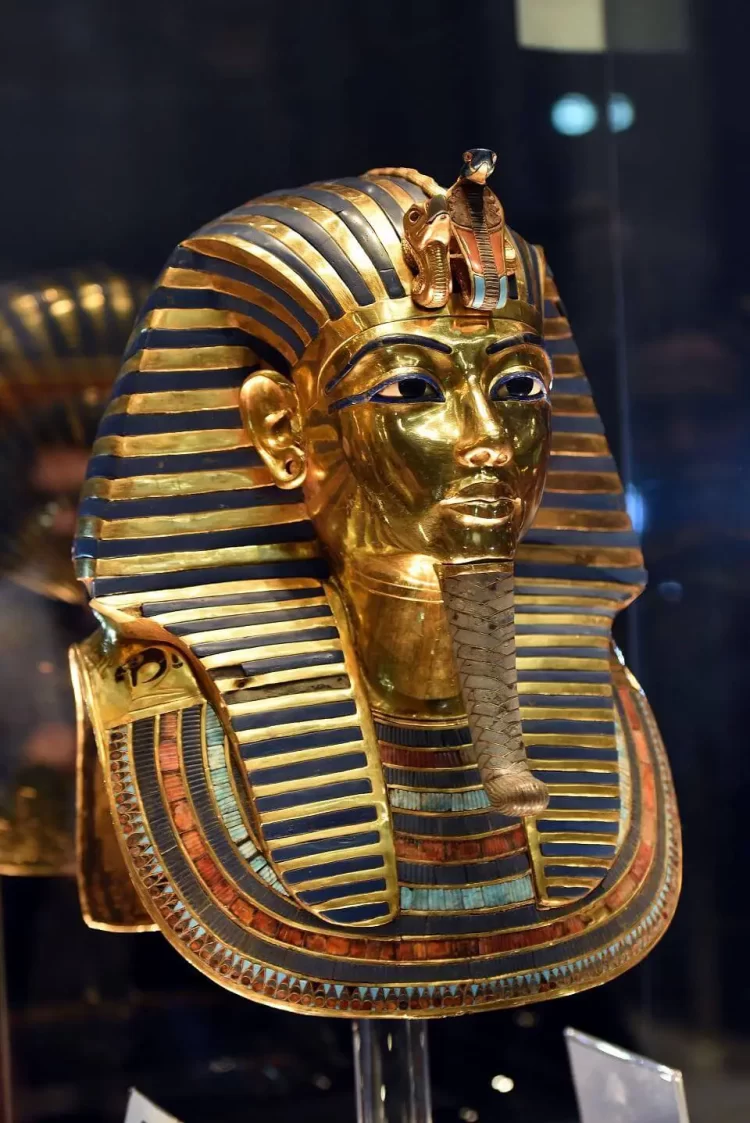Step back in time to the mystical land of ancient Egypt, where jewellery reigned supreme as a powerful symbol of beauty, status, and spirituality. The jewellery of ancient Egypt was a testament to the exquisite craftsmanship, intricate symbolism, and deep cultural significance, from the grandeur of pharaohs to the everyday adornments of the common people. Join us on a journey through the ages as we investigate the allure, materials, symbolism, and legacy of ancient Egyptian jewellery.
I. Jewelry’s Importance in Ancient Egyptian Society
A. The Power of Adornment: Learn about the importance of jewellery in personal adornment, symbolising beauty, wealth, and social status.
B. Religious and Ritualistic Beliefs: Discover the spiritual significance of jewellery in ancient Egyptian religious practises, where amulets, talismans, and symbolic motifs provided protection and a link to the gods.
C. Life and Afterlife: Investigate the role of jewellery in ancient Egyptian funerary practises, where it accompanied the deceased into the afterlife, preserving their beauty and ensuring a prosperous afterlife.
II. Ancient Egyptian Jewellery Materials and Techniques
A. Precious Metals: Learn about the use of gold, silver, and electrum in ancient Egyptian jewellery and the significance of each metal.
B. Colours and Gemstones: Explore the vibrant world of gemstones used in ancient Egyptian jewellery, including lapis lazuli, carnelian, turquoise, and amethyst. Investigate the symbolic meanings associated with various colours and gemstones.
C. Artistry and Techniques: Discover the intricate techniques used by ancient Egyptian artisans, such as granulation, filigree, cloisonné, and inlay work. Learn about their exceptional skill and attention to detail.
III. Ancient Egyptian Jewellery Styles
A. Necklaces and Collars: Marvel at the splendour of ancient Egyptian necklaces and collars, which feature intricate beadwork, symbolic amulets, and intricate patterns.
B. Bracelets and Armlets: Discover the various styles of bracelets and armlets, ranging from delicate chains to broad cuffs embellished with engravings and precious gemstones.
C. Signet Rings and Rings of Authority: Learn about the significance of rings in ancient Egyptian society, both as personal adornments and as symbols of authority and power.
D. Amulets and Talismans: Explore the protective amulets and talismans worn by both the living and the dead, which were thought to bring good fortune, ward off evil, and provide protection.

IV. Iconography and Symbolism in Ancient Egyptian Jewellery
A. Iconic Symbols: Decipher the meaning of ancient Egyptian jewellery symbols such as the ankh, the Eye of Horus, the scarab beetle, and the lotus flower.
B. Royal Emblems: Investigate the regal symbolism embedded in pharaoh jewellery, such as crowns, diadems, and headdresses, that reflect divine authority and kingship.
C. Personal and Family Symbolism: Discover how the ancient Egyptians used jewellery to represent their personal identities, family lineage, and religious affiliations.
V. The Ancient Egyptian Jewellery Legacy
A. Archaeological Discoveries: Discover important archaeological finds, such as the treasures of Tutankhamun’s tomb, which displayed the opulence and craftsmanship of ancient Egyptian jewellery.
B. Modern Jewellery Influence: Learn how ancient Egyptian jewellery inspired contemporary designers and continues to influence jewellery design and trends today.
C. Cultural Preservation: Investigate efforts to preserve and display ancient Egyptian jewellery in museums and exhibitions around the world, ensuring its enduring legacy.
What is the most famous ancient Egyptian jewellery?
One of the most famous and iconic ancient Egyptian jewellery pieces is the burial mask of Tutankhamun, also known as the Mask of Tutankhamun or the Golden Mask. This mask was discovered in 1922 in the tomb of the young pharaoh Tutankhamun by the archaeologist Howard Carter. It is considered one of the greatest treasures of ancient Egypt and has become a symbol of its rich cultural heritage.

The Mask of Tutankhamun is made of solid gold and intricately decorated with precious gemstones, including lapis lazuli, obsidian, and quartz. The mask depicts the face of the young pharaoh, adorned with a royal headdress, a vulture and cobra diadem, and a ceremonial beard. It measures approximately 54 centimetres in height and weighs around 10 kilogrammes.
The mask is not only a masterpiece of ancient Egyptian craftsmanship but also holds deep symbolism and religious significance. It was believed to protect and guide the pharaoh’s spirit in the afterlife. The intricate details and precious materials used in its creation reflect the wealth, power, and artistic skill of the ancient Egyptian civilization.
The Mask of Tutankhamun is displayed at the Egyptian Museum in Cairo, Egypt, where it continues to captivate visitors from around the world. Its discovery and subsequent exhibitions have sparked global interest in ancient Egyptian art and culture, making it one of the most famous and recognised jewellery pieces from ancient Egypt.
Summary of Ancient Egypt Jewellery
Egyptian jewellery has endured as a symbol of artistic brilliance, cultural significance, and spiritual connection. These adornments transport us to a bygone era of elegance and opulence, from the gleaming gold of pharaohs to the amulets worn by commoners. The craftsmanship, symbolism, and mastery displayed in ancient Egyptian jewellery continue to captivate and inspire, serving as a testament to this remarkable civilization’s ingenuity and creativity. As we delve into the world of ancient Egyptian jewellery, we uncover the stories, beliefs, and identities embedded within these priceless artefacts, preserving their timeless allure and ensuring they fascinate and enchant future generations.























